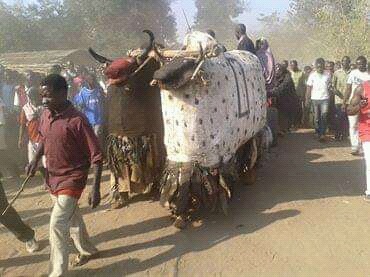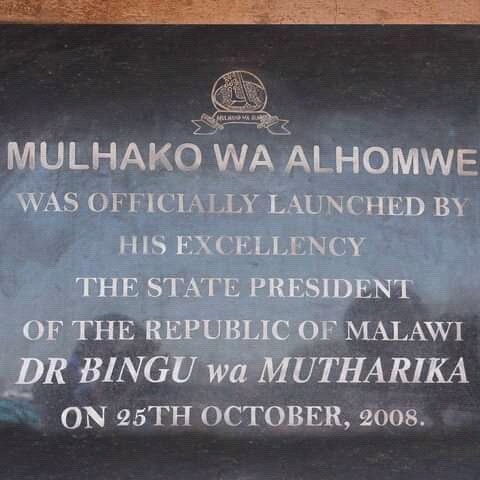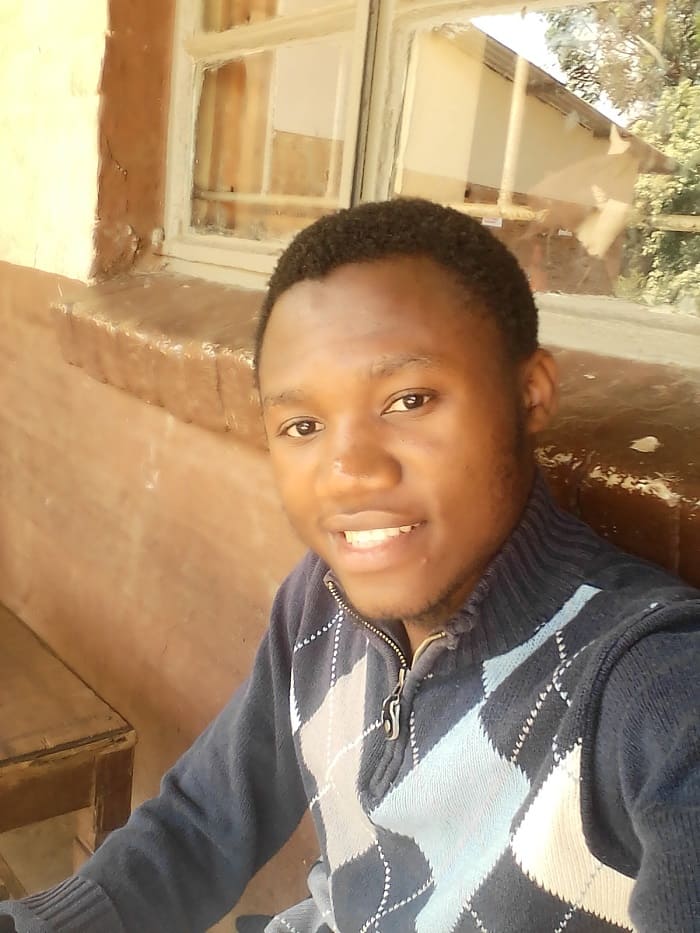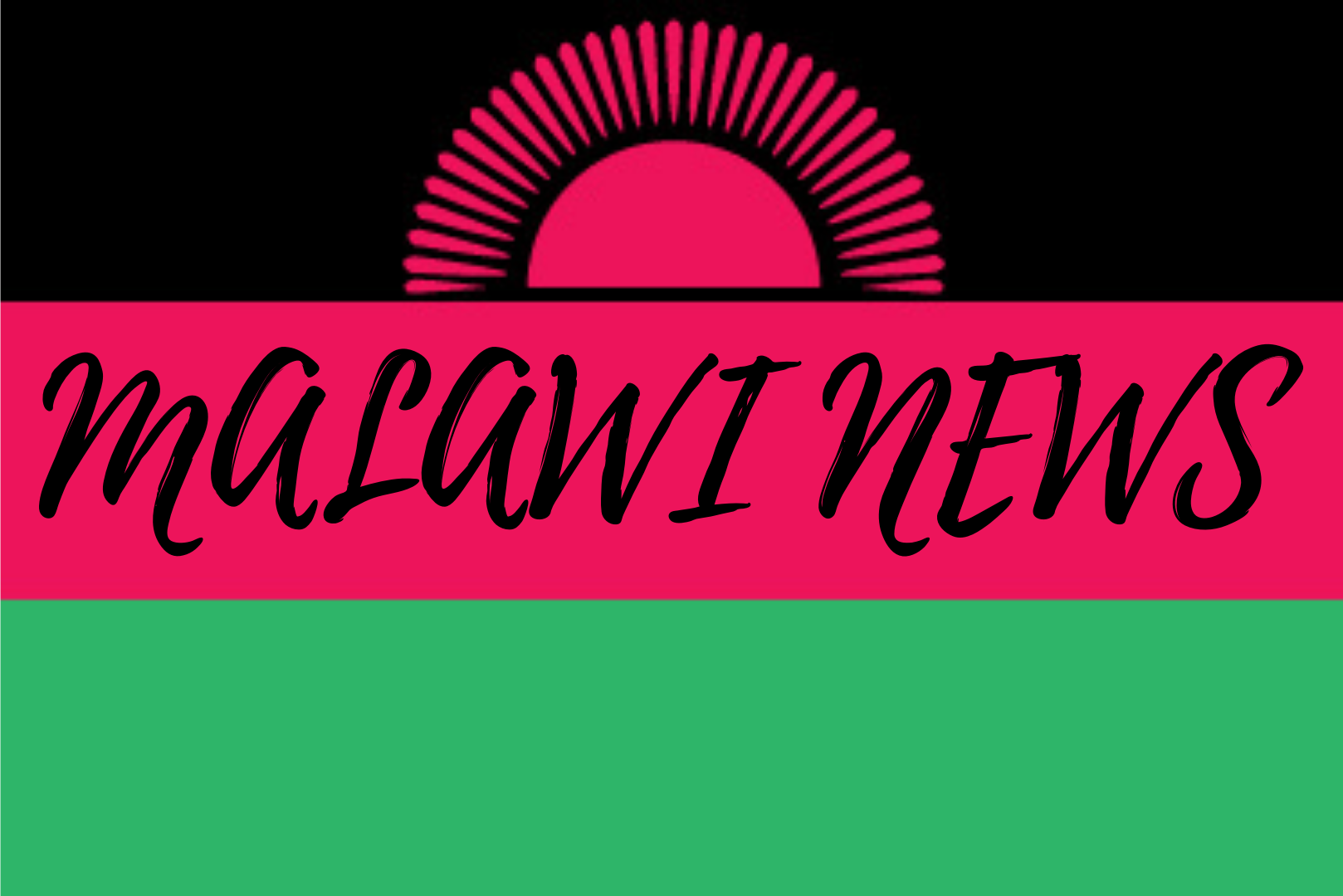TRIBES FOUND IN MALAWI
MITUNDU YA ANTHU YOPEZEKA MMALAWI
チェワ族
THE CHEWA TRIBE
ACHEWA
マンガンジャとしても知られているチェワ族の人は、2019年のマラウイ国勢調査によると、国内の主要部族の一つです。 チェワ族は、種族に関わらずほぼ全てのマラウイ人に話されているチェワ語を話し、マラウイ、ザンビア、モザンビークのチェワ族は、(ザンビアのムカイカで行われる)クランバ伝統儀式を、彼らの長老であるカロンガ・グワ・ウンディの総本山としている。
The Chewa people also known as Mang’anja are one of the most dominant people in Malawi according to Malawi National statistics office 2019 census.
They speak Chichewa language which is the common language spoken by almost all Malawians regardless of their tribe. Chewa people from Malawi, Zambia and Mozambique observes the Kulamba traditional ceremony (at Mkaika in Zambia) the Headquarters of their chief Kalonga Gawa undi.
Mtundu wa achewa ndi mtundu umene uli anthu ambiri kutengera kalembera waboma amene anachitika mchaka cha 2019.
Iwo amatchedwanso kuti amang’anja. Iwo amayankhula chichewa chomwe chili chiyankhulidwe cha dziko lonse lamalawi. Achewa aku Malawi, Zambia komanso Mozambique amapita ku mwambo wa kulamba ku mkaika m’dziko la Zambia kulikukulu kwa mfumu yayikulu Kalonga Gawa undi.
クランバは、チェワ族の長老たちがトップの存在であるカロンガ・グワ・ウンディへ敬意を払っていることを意味し、それら3つの国からの政府代表、政治リーダー、チェワ族らがその大イベントに参加する。年に一度のこのイベントは、スピーチ、伝統的なダンスが行われ、各国でのチェワ族の状況が長老たちからガワ・ウンディへ報告される。
Kulamba is a Chewa chiefs pay homage to their king Kalonga Gawa undi. Government representatives from the three countries, political leaders and some Chewas attend the great event.
The annual event is characterised by speeches, traditional dances and chief’s presentations to Gawa undi about Chewa tribe developments in their respective countries.
Nthumwi zamayiko atatuwa, andale komanso achewa ena amapitisa mphatso zawo kwa mfumu patsikuli. Kumwambowu kumakhala zoyankhulayankhula, magule ndi kupereka mituka.
チェワ族がよく踊る伝統的ダンス
POPULAR TRADITIONAL DANCE AMONG THE CHEWA
GULE WAWO OTCHUKA
グレ・ワンクル
GULE WANKULU
GULE WAMKULU

グレ・ワンクルはチェワ族で行われる儀式のダンスで、特別な許可を受けた男性の秘密結社であるニャウ団体のメンバーによって行われる。
Gule wankulu is a ritual dance practiced among the Chewa. It is performed by members of the Nyau brotherhood, a secret society of initiated men.
uyu ndi gule wamidzimu amene amavinidwa ndi achewa. Guleyu amavinidwa ndi azibambo ndi anyamata amene amakhala mgulu la nyau.
グレ・ワンクルは、村長の依頼で収穫期の終わりにチェワ族によって行われ、結婚式、長老やニャウメンバーの葬式、長老の就任時などのイベントでも行われる。ニャウダンサーは、サイ、ライオンなどの野生動物のような様々なものを模倣するコスチュームとマスクをまとっており、ヘリコプター、車、汽車のような姿をする者もいる。
Gule wankulu is performed by the Chewa tribe at the request of the village headman and at the end of harvesting season. It is also performed in some events such as weddings, funeral of a chief or any member of the Nyau society and installation of a chief. Nyau dancers wear costumes and masks representing a variety of character such as wild animals such as rhinoceros, lions and of course some they represent helicopters, cars and trains.
Amavinidwa panthawi imene amfumu alamula kuti avinidwe, pamaliro, polonga ufumu komanso paukwati. Nyau zimavala zigoba komanso masanza ndipo izo zimawoneka ngati nyama zakuthengo monga chipembere, mkango komanso ndege , galimoto kapena sitima.
ダンスは過去と現在の魂を繋ぐもので、ニャウダンサーの素性は明かされず、年配者や他の伝統的管理者らは、ニャウダンサーは先祖代々のモンスターであり、人間ではないと伝えている。
The dance is a link between the spiritual past and present. Identities of Nyau dancers are held secret as elders and other traditional custodians say that Nyau dancers are ancestral monsters and not human beings.
Guleyu amalumikizisa dziko la mizimu yamakolo komanso dziko lathu. Mayina a Anthu amene amavina gule amabisidwa ndipo ena amati Nyau si anthu koma zilombo.
グレ・ワンクルは観客にモラルと社会的価値を教え、伝授する。
ニャウのメンバーは若い男性を大人に導き、入団時期終盤でのグレ・ワンクルのダンスや若い男性の大人社会への参加を祝う責任がある。
Gule Wamkulu teaches the audience and initiates moral and social values.
Nyau members are responsible for the initiation of young men into adulthood and for the performance of the Gule wamkulu at the end of the initiation season, celebrating the young men’s integration into adult society.
Gule wamkulu amaphunzisa makhalidwe abwino ndipo ovina nyau amaviniranso anamwali amene pamapeto pake amawaphunzisa mmene angavinire guleyo.
ンゴニ族
THE NGONI TRIBE
ANGONI
ンゴニ族は、シャカ・ズールー(ズールー族の王)の脅威から逃れて、南アフリカ共和国のクァズル・ナタルからやってきた。ムジンバ、ンチェウ、ムチンジ、デッザなど、マラウイの南北各地に定住していた。
This Is a group of people that came from Kwazulu natal in South Africa in fear of Shakazulu. They settled in the northern and southern parts of Malawi such as Mzimba, Ntcheu, Mchinji and Dedza among others.
uwu ndi mtundu wa anthu omwe unabwera mmalawi kuchokera mdziko la south africa malo otchedwa kuti kwazulu Natal panthawi imene amathawa Shakazulu. Anakhazikika mchigawo chakumpoto komanso kumwera kwadziko la Malawi mmaboma a Mzimba, Ntcheu, Mchinji komanso dedza kungotchula ochepa chabe.
北のンゴニ族は、ジェレ・ンゴニとして知られ、最高長老のズワンゲダバに率いられて来ている。一方、南のンゴニはマセコ・ンゴニとして知られ、ンプタ、チディヤオンガ、チクセのそれぞれによって率いられていた。彼らの生活には、ビール、肉、女という3つの柱がある。素晴らしい狩人であり酒飲みとしても知られている。年に一度の文化的イベントとして、ウムテトが有名で、ムジンバのホラ山で開催されている。ほとんどの場合、マラウイの大統領と副大統領がこのイベントに参加し、ビジネス界や国内各所の有力ンゴニ族も参列する。
このイベント中、数えきれないほどの牛とやぎが食事としてさばかれ、伝統的なビールが参加者全員に飲みきれないほど出される。
The northern Ngoni are also known as the Jere Ngoni and they were led into the country by Paramount Chief Zwangedaba While the southern Ngoni which are also known as the Maseko Ngoni were led by Mputa, Chidyaonga and Chikuse respectively. Their three pillars are Beer, Meat and Women. They are known to be great hunters and beer drunkers. Their annual cultural event is known as Umtheto which takes place at Hola mountain in Mzimba. Most of the times Malawian president and vice president attends the event followed by some proud Ngonis from all parts of the country and business community.
During the event, countless number of cows and goats are killed for meat and traditional beer is also brewed more than enough for everyone in attendance.
Angoni akumpoto kwamalawi amatchedwa kuti a Jere omwe anatsogozedwa ndi Mfumu yayikulu Zwangwedaba polowa mdziko muno pomwe Angoni akumwera anatsogozedwa ndi Mputa kenako, Chidyaonga kutsirizira ndi Chikuse. Ngodya zawo zitatu ndi mowa, nyama komanso akadzi. Iwo amadziwika ndi ukatakwe wawo paulenje komanso pakumwa mowa. Mwambo wawo wapachaka umatchedwa kuti Umtheto omwe umachitikira kuphiri la Hola m’boma la Mzimba. Mnthawi zambiri mtsogoleri wadziko la Malawi komanso omusatira wake amapezekanso kumwambowu.
Pamwambowu Ng’ombe ndi mbuzi zambiri zimaphedwa ndipo anthu amadya mwansangala.
一般的なダンス
Common dance
GULE WAWO
インゴマ
INGOMA
INGOMA
ンゴニ族のダンス:インゴマはンゴニ族のダンスで、マラウイのンゴニ族の人々は誇りをもって取り入れている。歴史的なダンスで、ンゴニ族の人々はかつて、戦いに勝利するとこれを踊っていた。ンゴニ族は戦いの時の勇敢さと強さで有名である。
The Ngoni tribal dance: Ingoma, is the dance the Ngoni people in Malawi are proudly associated with. This is historical dance which the Ngoni people used to perform after triumph from war. Ngoni are famous because of their brave and strong character during wars.
Uyu ndi gule amene Angoni amakonda kuvina akawina nkhondo kalero. Iwo amatchuka ndikukatswiri wawo pankhondo.
Ingoma ndi gule odziwika kwambiri pakati pa angoni Akumzimba komanso Mchinji.
インゴマはムジンバとムチンジ地区のンゴニの間でとても有名なダンスで、男性のインゴマダンサーは、動物の皮と毛と羽で作られた冠のようなものや、胸中に輝くビーズなどのコスチュームを着る。手には鋭い槍と戦い用の盾を持っている。戦っているかのように歌って踊り、足を地面に踏みつける。拍手や叫び声も、腰から下に巻物をしている女性のインゴマダンサーから聞こえる。
Ingoma is a very famous dance among the Ngoni of Mzimba and Mchinji Districts. Male Ingoma dancers wore costumes that includes a headgear made of animal skin and animal wool and feathers and some beads shines throughout the chest. With then in their hands us a sharp spear and a war shield. They sing and dance while marching like they are in war and stamp their feet on the ground. Hand clapping and ululation is also heard from women Ingoma dancers who wore a wrapper that runs from waist downwards.
Ingoma ndi gule odziwika kwambiri pakati pa angoni Akumzimba komanso Mchinji. Amuna amene amavina guleyu amavala zikopa zanyama komanso mnthenga ndi mikanda yomwe imawala pachifuwa pawo. Iwo amanyamula mikondo komanso Zishango. Amayimba nyimbo namaguba mokhala ngati akuvina pomenyesa mapazi awo pamnsi. Amayi amalulutira ndikuwomba mmanja ndipo amakhala avala msalu.
ロームウェ族
THE LHOMWE TRIBE
ALHOMWE

ロームウェ族は、マラウイの国勢調査によると国内で2番目に人口の多い種族になります。この種族はマラウイの南部地域に住んでおり、ムランジェ、チョロ、パロンベに最も多い。ロームウェの人々はモザンビークから18世紀初期にマラウイに移住してきており、チョロのマカンデとチスンガの紅茶農園、ムランジェのステコとエスペランザの紅茶農園で就業機会があったので、その農園の付近に定住することが多かった。
Lhomwe tribe is the second largest tribe in Malawi in terms of number of people according to Malawi Nation Statistics Office. This tribe is situated in the southern region of Malawi, having most people in Mulanje, Thyolo and Phalombe. Lhomwe people migrated into Malawi in the early 18th century from Mozambique. Due to available employment opportunities at Makande and Chisunga Tea factory in Thyolo, and Steko and Esparanza Tea estate in Mulanje they preferred to settle in areas around the factory land.
Uwu ndi mtundu wa anthu omwe uli wachiwiri kukhala ndi anthu ambiri muchiwerengero kutengera kalembera waboma wamchaka cha 2019. Alhomwe amapezeka kumwera kwa Malawi makamaka mmaboma a Mulanje, Thyolo komanso Thyolo. Iwo analowa mmalawi kuchokera mmdziko la Mozambique zaka zikwi ziwiri zapitazo. Iwo anakhazikika moyandikira mafakitale opanga tea a Makande, Chisunga ku Thyolo komanso Steco Ndi Esparanza kumulanje kamba ka mwayi wa ntchito omwe umapezeka mafakitalemu.
ロームウェ族は年に一度の文化的イベントは、ムラコ・ワ・アロームウェとして知られており、10月に行われる。ムウェネ・ワ・ムウェネ(ロームウェ代表の称号)がイベントを取り仕切り、ムランジェのチョンデで開催される。この文化的イベントは、マラウイ元大統領である故ビング・ワ・ムタリカによって始められた。
Lhomwes have their annual cultural event which is known as Mulhako wa Alhomwe occurring in the month of October. The then Mwene wa mwene (title for Lhomwe Leader) organises the event which takes place at Chonde in Mulanje. This cultural event was firstly opened by the late president of Malawi Prof. Bingu wa Mutharika.
Throughout its opening Mulhako wa Lhomwe has attracted different number of people even from other tribes.
Alhomwe amapanga mwambo wawo wapachaka wotchedwa Mulhako wa Alhomwe omwe umachitika kwa Chonde mmwezi wa Okotobala. Mwene wa Mwene ndiye amayitanisa mwambowu. Mwambowu unayambisidwa ndi malemu Pulezidenti wakale wa Malawi, Prof. Bingu wa Mutharika.
Kuchokera panthawi yomwe Mulhako wa Alhomwe wakhala ukukopa anthu ambiri ngakhale anthu amitundu ena.
一般的なダンス
Common dances
GULE WAWO
ベニ
Beni
Beni
これはロームウェ族の有名なダンスの一つで、ムロカ・ワ・アロームウェなどの文化的なお祝いで踊る。男性のベニダンサーは警察官のようなコスチュームを着て、女性のダンサーは緑のドレスと冠のようなものを被る。
this is one of the famous dances of Lhomwes and it is performed during Mulhako wa Alhomwe and other cultural celebrations. Male beni dancers ware costumes that make them appear as police officers while women wore a green dress and a headgear
uyu ndi gule otchuka kwambiri pakati pa alhomwe ndipo amavinidwa mnthawi ya Mulhako wa Alhomwe ndi zisangalalo zina. Amuna ovina guleyu amavala zovala zonga ngati za apolisi ndipo azimayi amavala zovala zobiriwira ndi duku.
チョパ
Tchopa
Tchopa
このダンスでは、男性は腰から下だけを動物の毛皮で覆い、胸は焼けつくような太陽の下で裸の状態となる。頭にたくさんの食事の皿を乗せ、それらを落とすことなく踊る。
during this dance men wore animal wool that only covers the waist downwards leaving the chest on the scorching sun. They carry a large number of food plates on their head and dances without the plates falling.
povina guleyu abambo amavala zikopa zanyama ndipo amanyamula mbale za zakudya pamutu pawo namavina mbalezo osagwa.
トゥンブカ族
THE TUMBUKA TRIBE
ATUMBUKA
トゥンブカ族はマラウイの北部(ムジンバ、ンカタベイ、チティパ、カロンガなど)と、マラウイ湖畔にいる。トゥンブカ族はトンガ語に似たトゥンブカ語を話し、マリペンガやヴィンブザというダンスを踊る。
This is also another tribe that is found in the northern part of Malawi (Mzimba, Nkhatabay, Chitipa, Karonga etc) and the lake shores of the Lake of stars (Lake Malawi). Tumbuka people speaks Tumbuka language which is similar to Tonga Language.
Their common dances are Malipenga and Vimbuza.
Uwunso ndi mtundu wina wa anthu omwe umapezekera kuchigawo chakumpoto ( chitipa, Mzimba, Nkhatabay,Karonga) komanso mphepete mwa nyanja ya Malawi. Iwo amayankhula Chitumbuka chomwe chimafananirako pang’ono ndi chitonga. Iwo amavina magule a Malipenga komanso Vimbudza.
マリペンガは複雑なダンスで、トゥンブカの人達には簡単だが、それ以外の人たちには踊るのが難しい。マリペンガダンサーは白いシャツと白い短パンを着て、杖を持って特別なドラムのリズムで踊る。
Malipenga is a complicated dance Easy for Tumbuka people but hard for Others to dance to. Malipenga dancers are dressed in white shirt and a white short. They carry with them a walking rod while dancing to the special drumbeats.
Malipenga ndi gule ovuta kavinidwe kake ndipo amaphwekera ayini ake. Ovina guleyu amavala zovala zoyera ndipo amanyamula ndodo mmwanja mwawo povina motsatira kulira kwa ng’oma.
ヴィンブザは回復のダンスとされており、誰かが病気になると踊ることが多い。このダンスは、踊ると回復の力を持った先祖の魂と繋がると信じられている。
Vimbuza is considered to be a healing dance that is mostly danced when someone is sick. It is believed that the dance is linked to spiritual ancestral healing that has the power to heal someone once it is performed.
Vimbudza ndi gule wamidzimu yemwe akavinidwa amabweretsa mphamvu yamachilitso.
ヤオ族(マラウイ東部)、セナ族(ンサンジェ地区とチクワワ地区)もマラウイにいる部族である。
Yao tribe (found in the eastern region of Malawi) and Sena tribe (found in Nsanje and Chikwawa districts) are also some of the tribes that are found in Malawi.
Ayao (omwe amapezekera kuchigawo chakummawa) komanso Asena (opezekera mmaboma a Nsanje ndi Chikwawa) ndi ena mwa anthu omwe amapezeka mdziko la Malawi.
寄稿者 / Blogger
ブロガー:ニアシャ・ングルウェ
Blogger: Nyasha Nguluwe
ロイヤル・タレント・ユースの設立者でCEO
ロイヤル・タレント・ユース:
自分たちの能力を使用した国際的で明確な存在感を持って、学術的、精神的、知的な面で人間への最高のインフルエンサー、志を持つ者、モチベーターになることをビジョンとする若者による組織です
Founder and Chief executive officer at Royal Talented youths; a youth led organisation with a vision of being best influencers, aspirants and motivators to the human race in academical, spiritual and intellectual dimensions in Malawi with international visible presence by using our talents.
Contact details: +265998637912
WhatsApp: +265886765101
Email: nguluwenyasha360@gmail.com
District of origin: Mulanje (chonde)
Residential District: Thyolo (Bvumbwe)

 Moni Malawi
Moni Malawi 